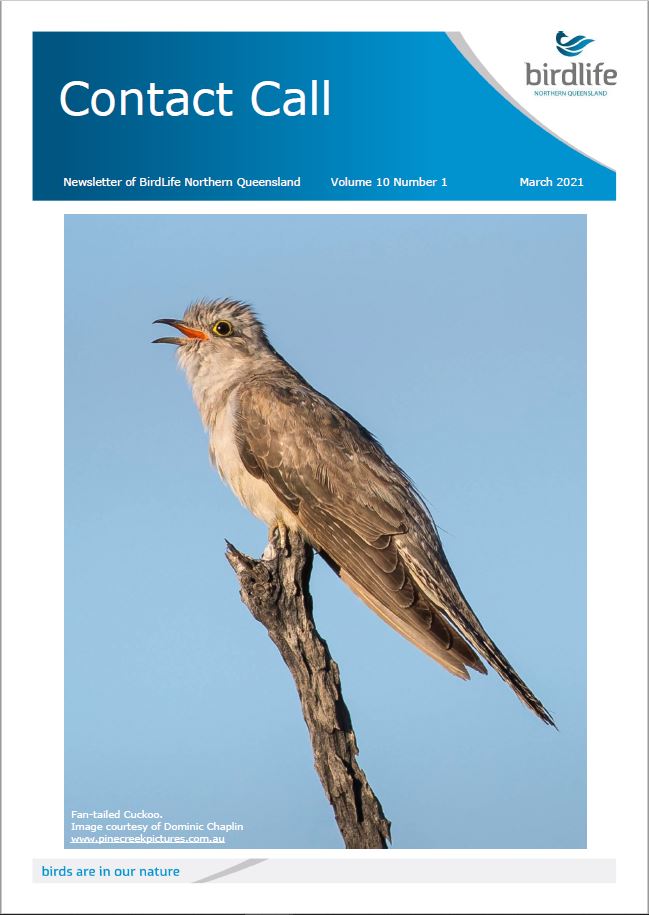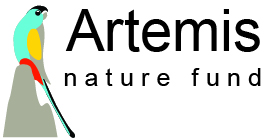A 10 minute interview with Steve Murphy on ABC Radio
“The more we looked the more we saw.” Andrew Isles
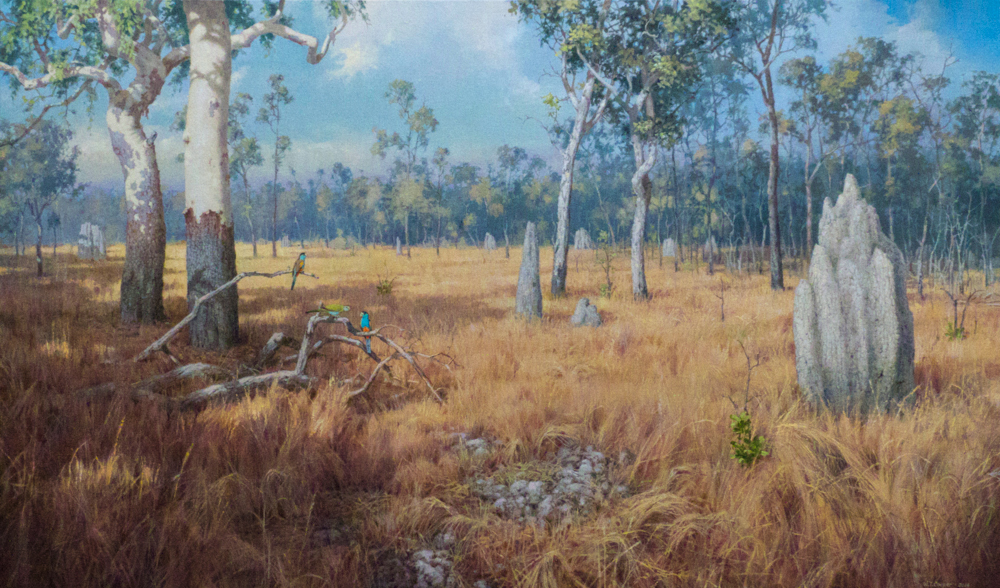
Courtesy of Andrew & Belinda Isles/Wendy Cooper
My wife Belinda and I first visited Cape York in 1983. On our way to Iron Range, we looked for Golden-shouldered Parrots but drew a blank. Thirty years later we did a similar trip with Bill and Wendy Cooper with excellent results. The Coopers are close friends with the Shephards of Artemis Station and that was our first port of call. It was a wonderful few days and we saw Golden-shoulders in a variety of places on the property.
Our final morning was particularly memorable. Bill and Wendy moved on to Lakefield National Park, but we decided to slow down and have one last look. There were a few Golden-shoulders near the main Artemis road leaving the homestead so we parked the car, hopped over the fence, and started to watch the parrots. The more we looked the more we saw. Ahead of us were a largish group, probably a dozen or more, feeding on the ground. Many were juveniles and it is relatively easy to identify the sexes. The young juvenile plumaged males are already distinguishable from the female by brighter blue cheeks.
We then heard Budgerigars behind us, an uncommon bird on Cape York, and there were a small number in a tree with two adult male Golden-shoulders. Not long after a small party of the magnificent northern race of the Pale-headed Rosella came in. These are a stunning bird, formerly known as the Blue-cheeked Rosella, with their combination of extensive blue underparts and yellow crown. Then more Golden shoulders put in an appearance along with a small group of Crimson-winged Parrots; and finally a forging party of excitable Grey-crowned Babblers.

This experience gave me the idea of getting of a commission from Bill Cooper – not a portrait of Golden shoulders but a habitat painting. Bill started life as a landscape artist and this grounding helped him become one of the greatest wildlife artists of all time. So now Belinda and I have a large oil painting of Golden shoulders living in their open grassland and woodland habitat with the termite mounds they nest in.
It is dreadful to think that in a few short years after our 2013 visit parrot numbers have declined to not much more than the birds we saw on that morning. But there is hope thanks the to the work being done by the Shephards and Artemis Nature Fund. Please consider making a donation to the fund to become a Friends of Artemis.
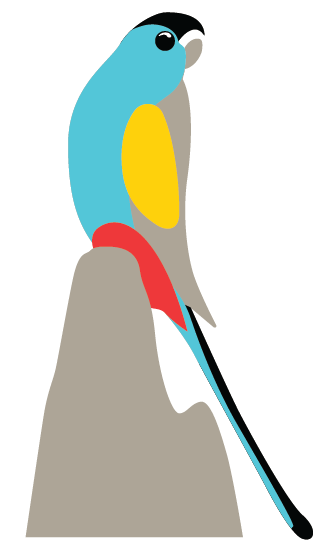
Letter of Support: BirdLife North QLD
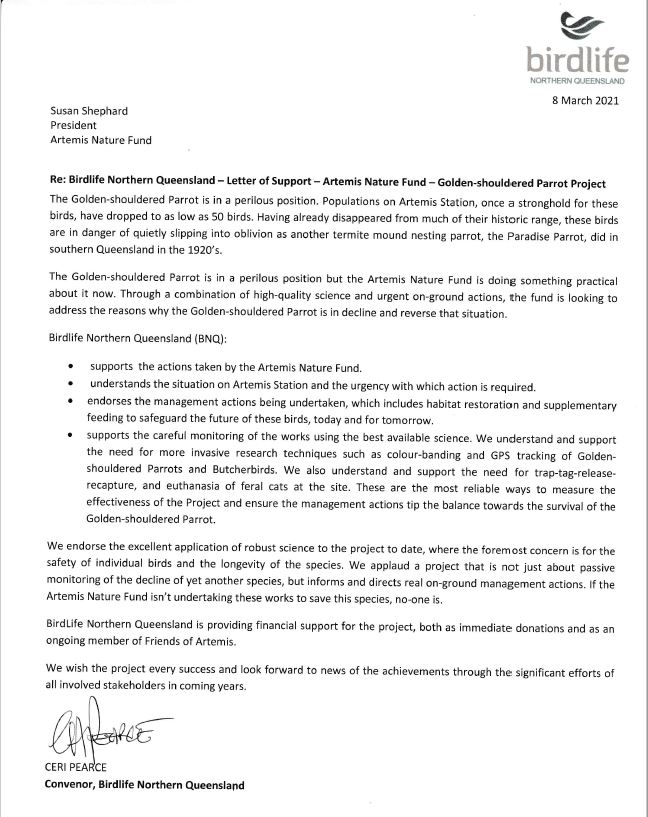
A professional wildlife photographer reflects. Martin Willis
Professional wildlife photographer Martin Willis reflects on his long connection with, and concern for Golden-shouldered Parrots on Artemis. Martin has travelled the world for his stunning images, five of which have been finalists in the BBC International Wildlife Photography Competition.
As a young bird photographer I admired with envy a wonderful photograph of a Golden-shouldered Parrot perched regally atop a conical termite mound. Oh to see and photograph such a rare and beautiful bird! Unfortunately, found only in a small pocket of the north-eastern extremity of the continent, it was as far from my reach as it was possible to be.
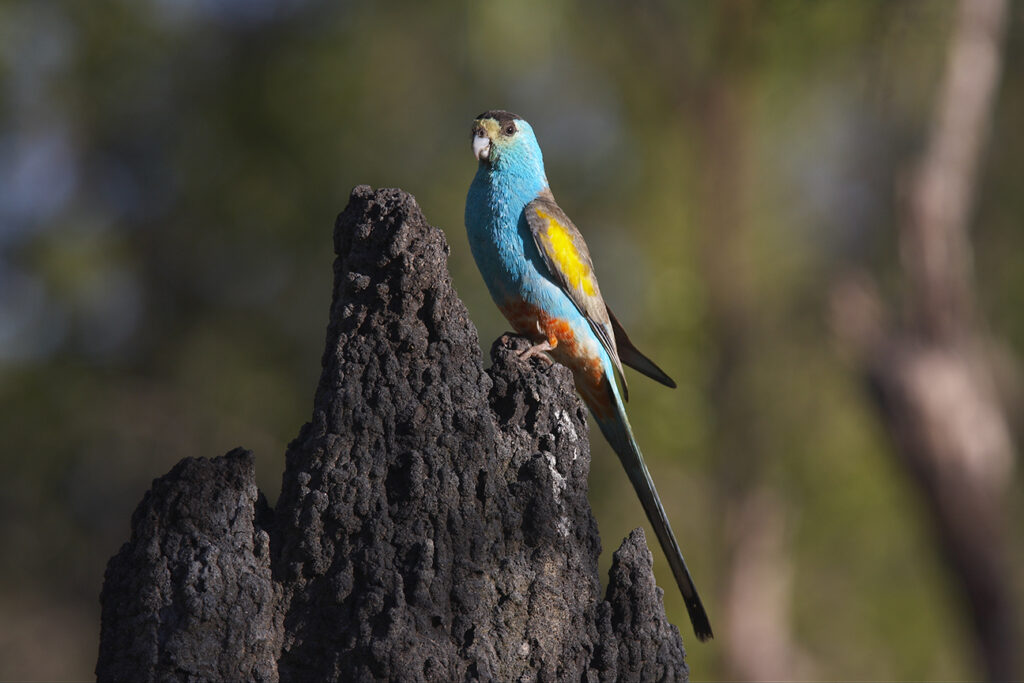
Eventually, however, my geographic situation changed and I was in a position to pursue one of my dreams.
Sue and Tom Shepherd, the owners of Artemis Station and voluntary custodians of the parrot, were extremely accommodating and set myself and fellow photographer, the late Ian Boyd, up with a campsite in the bush just a few hundred metres from where the birds were breeding. “I don’t mind photographers working near the nest when the young are about to leave.” Sue explained. “It helps prevent predation of the fledglings by butcherbirds”. Apparently, the butcherbirds perch in a broad-leaf melaleuca or other such shrub and wait for the young to emerge from their ant-bed nest. Easy dinner. Continued encroachment of woodland into the parrot’s open habitat is thought to be a major contributor to the dramatic decline in numbers of the GSP.
Well, we were very happy to oblige Sue and proceeded to set up our hide a good distance from the nest in preparation for a long awaited photo session.
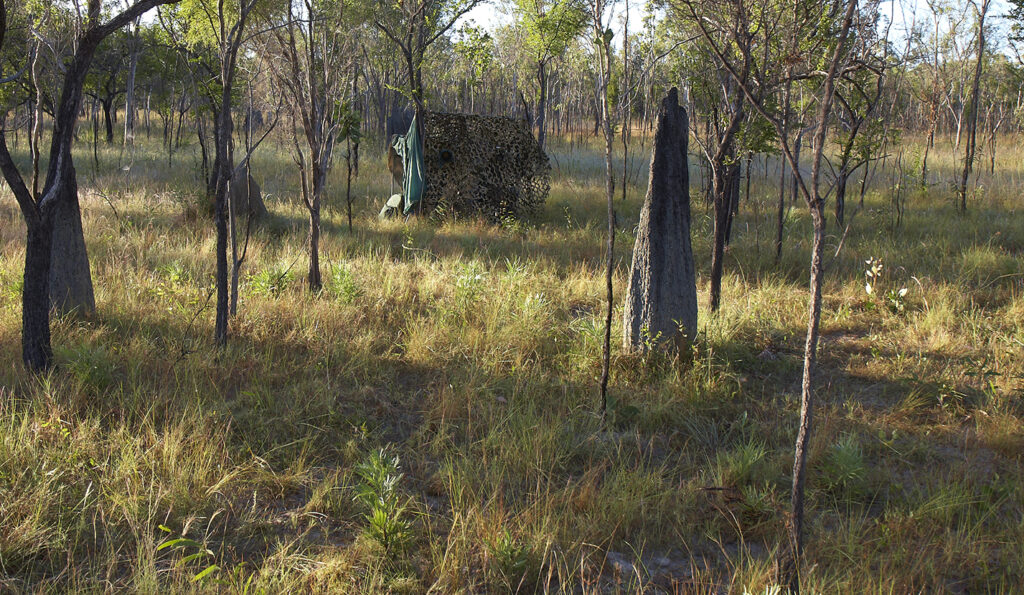
Early the next morning we settled ourselves into our camo hide and waited for the action. Before long a gold and turquoise flash signalled the arrival of a magnificent male. He alighted obligingly atop the pinnacle of the mound and my photographic love affair with the Golden-shouldered Parrot began.
My first experience with the Golden-shouldered Parrot on Artemis was in 2007 and at this time it was common to see flocks of 20 or more birds across the property. However, what has really alarmed me of late is how few of these iconic little birds are left and how quickly they are disappearing. It would be a sad fate and an indictment on all Australians if we were to see the Golden-shouldered Parrot follow the same path to extinction as its brightly coloured cousin, the Paradise Parrot.
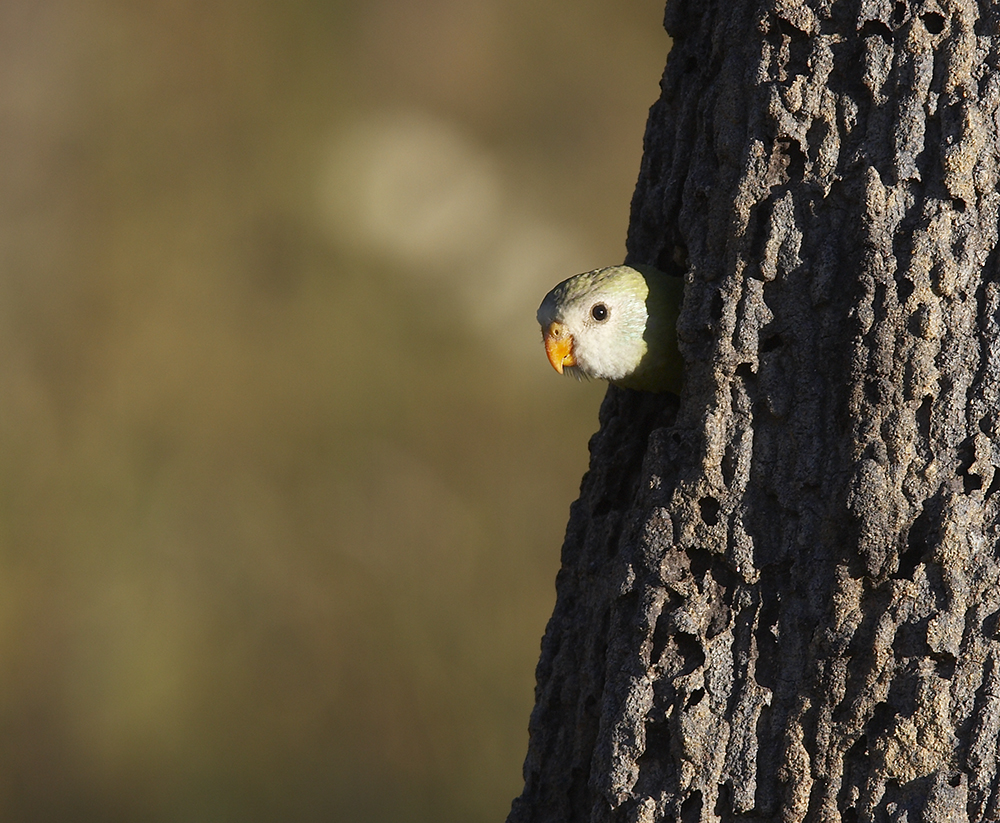
Fortunately, Sue and the rest of the people involved with the Artemis Nature Fund are rigorously pursuing a solution to this rapid decline. Drastic situations demand drastic measures and so I find myself extremely supportive of the most recent push to turn things around for GSPs on Artemis. Even as a passionate bird photographer, who hates to see banded birds in the wild, I am even more passionate about the survival of the species, so I understand the absolute necessity for colour-banding and the other research techniques being used. With concerted help from the public, I have every confidence that Sue and the team have all the necessary skills and passion to solve the problems and reverse the decline, and will do so in the most careful and diligent manner. Consequently, I have no hesitation in commending their work and encouraging other people to step up a support this most important cause.
All images in this post are copyright Martin Willis. To see more of Martin’s photos, visit: https://www.martinwillisphotographs.com.au/
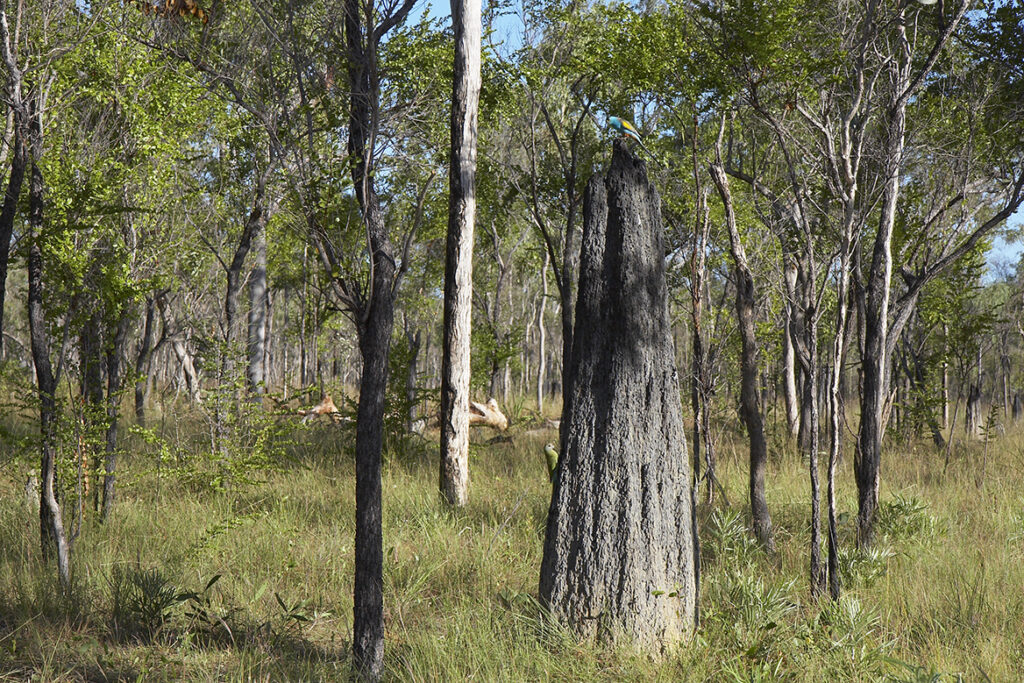
Project overview: Article in “Contact Call”
This article provides a nice overview of our work restoring Golden-shouldered Parrots on Artemis. It focusses especially on how we use science to guide our actions.
